#interwar
Text
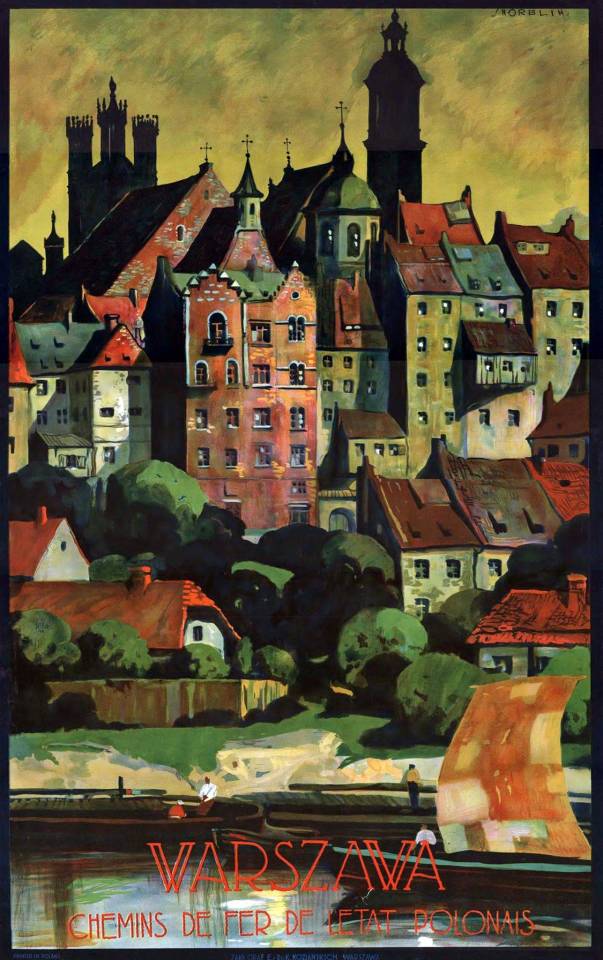
Art Deco Interwar Polish railway posters promoting Warsaw (Warszawa) by Stefan Norblin in 1926.
Norblin “was well-known for his poster designs for the Polish tourist industry. His poster work is distinguished by its unconstrained expression of subject matter, fine hand and intense color. It depicted specific Polish regions, towns and historical buildings for the Ministry of Transportation” (Polish Poster p. 87). Here, we see a view of the old buildings and spires of Warsaw seen from the Vistula river. Gebrauchsgraphik April 1, 1936, p. 43. (x)
#1926#poster#warzaw#stefan norblin#promoting#art deco style#art deco#polish artist#polish art deco#Juliusz Stefan Norblin de la Gourdaine#promoting warzaw#railway posters#railway poster#Polish railway posters#interwar#warszawa#polish poster#warzaw poster#norblin
75 notes
·
View notes
Photo

Rudolf Schlichter, Meeting of the Fetishists and the Maniacal Flagellants, c. 1921
#rudolf schlichter#neue sachlichkeit#new objectivity#fetishism#flagellant#germany#art#interwar#modernism#grupaok
411 notes
·
View notes
Text

"The battlecruiser CONSTELLATION (CC-2) being broken up on the ways at Newport News Shipbuilding in 1924. CONSTELLATION was 22.7% complete when work was stopped due to the the Washington Naval Treaty. Newport News was awarded contracts for two ships out of the class of six - the other, on the neighboring builder's slip, was RANGER (CC-4) which was cancelled at just 4% complete. Philadelphia Naval Shipyard was awarded CONSTITUTION (CC-5), cancelled at 13.4% completion, and UNITED STATES (CC-6), which reached 12.1%. The other two ships of the class, LEXINGTON (CC-1) and SARATOGA (CC-3), were ordered from Fore River Shipyard and New York Shipbuilding, respectively. Those latter two were chosen for conversion to carriers because of their completion degree, which exceeded 33% in both cases."
Date: 1924
Shared on Haze Grey Facebook page: link
#USS CONSTELLATION (CC-2)#USS CONSTELLATION#Lexington Class#Battlecruiser#Warship#Ship#United States Navy#U.S. Navy#US Navy#USN#Navy#Newport News Shipbuilding Co#Newport News#Virginia#East Coast#1924#undated#interwar period#interwar#scrapping#cancelled#my post
12 notes
·
View notes
Text
The modern girl of the early 20th century
In this article, we are going to discuss the way in which art, comics and illustrations in the early years of the 20th century helped shape and cement the archetype of the new modern woman, not only in the western world but globally. After all, modernity happened everywhere. I don’t like to put countries and rank them as one set of countries as being the end goal that everyone else is trying to catch up to, because this is very much a tenet of imperialism and i am decidedly not here for it. However, there is no going around how this is part of a very prevalent narrative. That you can quantify progress and quote unquote civilization and modernity. I think of the prevalent idea about of how progress moves and how it’s a view that is generally associated with the current capitalistic understand of our world that values constant progress and growth, and that history works in that manner. However progress is never truly linear, and the way history evolves is full of ebbs and flows, of progress in certain areas, and regression in others, and there is always a judgement of value that is being made when thinking about the march of progress . The 1920s and the 1930s were an era of constant change on all fronts, and the world as a whole was marching straight into the modern world as the repercussions of the first world war were still being felt.
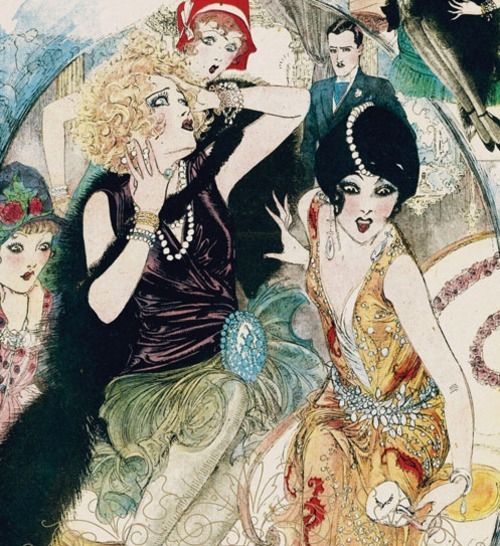
In those years, the printed medium was at its peak, illustrated strips, which were what we would consider to be the ancestor of the comic were gracing the pages of newspapers , and in an age with no internet, where the medium of radio or movies were just getting their start, newspapers were the main way people got all of their informations on the current events, the latest plays and the latest books and all of the knowledge about the right places to be if you were anyone. From the classified ads to the marriage announcements, the newspaper and the printed medium in general was solidly embedded in the culture.
The 1920s and the 1930s were the beginning of the movement of art deco, a new modern style that was clean and streamlined visually, with very neat and geometrical lines, and it is very much a reflection of the current trends in fashion, architecture and design. It is very much in the spirit of the times and i think it was very much in keeping with the times where there was much more of a monoculture in general, you could easily pinpoint what were the big lines of the trends of the eras as they all played off each other and reflected the world that existed around them — through the visual arts, art and culture. There was a generalized aesthetic, if one can say it like that, in a way that I don't think we have anymore. I mean i have been trying to pinpoint what are the trends for the 2020s and when I tell you I absolutely cannot. I have to admit that trends are cycling at such a fast rate nowadays that they do not really have the time to truly permeate the general mainstream culture. On one hand, I do think it’s good that no one can feel the pressure to ascribe to a specific mainstream set of trends if they don’t like to, I think it’s way better to really be able to pick and choose what kind of style truly reflects the person you are and your interests, however I think this does imply a minimum of effort to truly try and discover those interests and curate a personal style and not follow the extremely fast trends that we have now. While before, those trends shifted on a cycle of roughly 10 years, and no matter how stark the transition from the 1910s and the Edwardian era to the shapeless and shorter dresses of the 1920s and then to the more feminine and elegant silhouette of the 1930s, the truth is that the change is very gradual, the shape relaxed and shortened season after season, and it’s only with distance that you can perceive how strong the change was. I think so much of it is in hindsight. Maybe in 10 or 20 years I will be able to pinpoint the changes and broad line of the 2020s tendencies, because history aways seems clearer when you are removed from it.
Through art, images, fashion and advertisement, the world saw a changing and mutating definition and significance off what it meant to be a woman. First of all, I think I really have to stress that i’m talking in binary terms here because this is how the illustrations and advertising as well the shifting of the gender politics were at their base core. I totally acknowledge how it is so much more complicated than that, and the definitions of womanhood and femininity are as diverse and complex and Complicated as there are women in the world, and that our relationship to gender and gender expression is an ever evolving one and that understanding will always be within a certain societal context and you cannot divorce that understanding from the global realities. All of it is arbitrary in a certain way, but it is constructed with social interaction, customs, and visual images contribute greatly to this understanding that we have of it. I will be taking about a very mainstream view of gender, and womanhood here through advertisements and images, which is how that identity was constructed during the period we’re talking about, and especially during the interwar period which was one of great change and shaking up the old ways of how things were being done and how people reacted to it, as well as how it translated to the world of visual culture specifically in the area of the illustrations and comics that were in the printed press and the advertisements of the era.
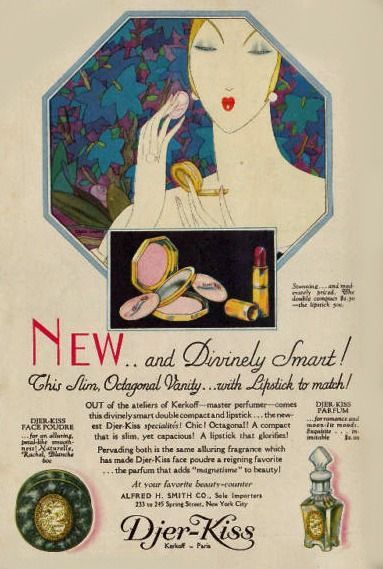
During the 1920s, we can see that change very quickly and assist to a boom in consumerism, with the roaring twenties, the end of the first world war and the end of a very specific idea of traditionalism, there is this new and unbridled world of possibilities in the general culture and consciousness. The youth goes out to try and have fun, the magazines and stores are trying to sell anything and everything to a new modern young woman. The 1920s is the moment where we can see that shift, it’s that clinching moment where things become overwhelmingly mass produced and the predominance of the ready made. Not that this shift was not happening beforehand, the industrial revolution happened in the 1830s or so and it steadily continued during the 19th century, building over what was existing, and changing the cultural mores and the habits around consumption, but i think that break in the 1920s is absolutely obvious. It is the beginning of modernity as one calls it.
With the advent of modernity came new possibilities and understandings. Of course, this phenomenon doesn’t decline itself the same way everywhere in the world, the context in India will be very different from the society in Japan or in the United Kingdom or in France, however, it is possible to see a significant shift in the understanding of the concept in itself of womanhood, and this happened throughout the whole world. In a matter of a couple of decades, the way a woman existed had shifted to something new, exciting, and even a bit scary to those from an older generation holding on to their own definition of what a woman should be. It was the age of the flapper, a word that came to designate this very specific archetype of independent young women of the 1920s.
The early 20th century was an era that was moving extremely fast in terms of the illustrated press. From articles and illustrated strips to publicity, the image was more present than ever before. During the last season of the podcast, I talked about the Golden Age of Illustrations which was from the 1870s to the 1920s, and the reason for this truly that it was the last years before the use of photography and video truly took over the use of illustration in the mainstream for entertainment and advertisement.
These were also the years where cinema was making its way, the silent era, the beginning of the way we think about celebrity. It truly changed the game in a way no one could have predicted. It was an age of glamour and excess. The early years of the film industry were absolutely insane, and please tell me on twitter or instagram if you would like a more in-depth foray into that subject and more precisely into the visuals, the art directing and the way the movies of that time looked, but suffice it to say that it was absolutely bonkers, Hollywood was so unhinged. There was glamour, beauty, but also murder and scandals and sin, and all of it being filmed in a soft focus of satin and sin. Even back then, as Hollywood’s myth and legend was being constructed, it was a place where you could gain it all, or you could lose it all, it had the appearance of perfection, and yet, everyone talked about how it was a den of sin and vices. And I will say that the current Hollywood does not compare at all to those golden years, and especially not when you think of it in terms of the dream that Hollywood sells. All of the current players in the Hollywood scene bore me to tears, I am not enchanted by people trying their best to be hashtag relatable in their gigantic mansions and white tees and cargo shirts. I genuinely think that if you are rich, you should at least look the part somewhat, otherwise what is the point of it ? Where are the beautiful glamorous people at ? No one is even doing a scandal the way they used to anymore, it truly is tragic.
Ralph Barton, a popular illustrator of the 1910s and 1920s created his illustrations for the book Gentlemen Prefer Blondes written by Anita Loos in 1925. His art was a beautiful complement to the story and underlined perfectly the fun and comedic story of the way the young women were trying to climb the social ladder. That book was adapted brilliantly later in the 1950s and starred an absolutely brilliant Marilyn Monroe in the titular role of Lorelei Lee, and while the 1950s movie truly captured the heart of the story and made it their own, which just goes to show that an adaptation does not have to be completely faithful to the text to be faithful to the core of the story. But the original book was about the flapper and the gold digger and the new kind of woman that was started to rise in that era She was a social climber, desperate, and yet still fun and irreverent. The illustrations Barton created for this book were fun, fresh and very representative of the energy of that era, where there was a lot of social mobility, and people were making fortunes, looking to make fortunes, or simply losing these fortunes. It was simply an era of social upheaval in a lot of ways. It was in the air du temps.


This era was chock-full of illustrators and talented artists as visual arts was still extremely highly valued in the mainstream, a lot of female illustrators getting their names in the papers and becoming well known for their comic strips and illustration work. The visual of the modern girl or the new woman, both terms being used almost interchangeably and describing the same concept of this new type of women at the dawn of the jazz age was developed by these very artists. She had boldness, charm and a sort of sexual awareness and a fearlessness, with a desire to seize life and all its possibilities. A Sort of nihilism in line with the general sense of dread and celebration that often follows consequential world events, even a bit of a hedonism especially in western countries. After the first world war, a break from the past and toward modernity.
The short bobbed hair, the vamp makeup, the receding hemlines, even though the length of their dresses were still fairly modest by today’s standards, after all, their knees were still covered, it was such a scandalous break from the earlier traditional mode of dress, may it be the western Edwardian dress, or the places where dress was still majorly traditional and cultural outfits. After all, it is because of capitalism, fast fashion and cultural imperialism and globalization that nowadays we are all wearing very similar fashion and dress whether you live in Italy, Nigeria or Peru. Of course, cultural mores will make it be slightly different from place to place, but hoodies, trousers trainers are worn all over he world. However. A bit more than a hundred years ago, people were still wearing their caracos and djellabas in Algiers, and now those outfits are being left for special events. In Korea, Hanboks were worn on a daily basis. In less than a hundred years, most of, if not all, traditional and cultural outfits have been relegated to relics of the past. And yet, the 1920s is that moment where modern western dress started to really become the norm as the world shifted into modernity, and this new scary idea of the modern woman started to take hold.
Beauty and the advertisement of beauty, makeup and fashions were a cornerstone of the way that identity was constructed, because for the first time since the 18th century at least in the western world, the use of visible makeup was no longer frowned upon. I say visible, because even though makeup was thought to be the purview of actresses and ladies of ill-repute in the 19th century and the Edwardian eras, women were still using cosmetic aids to beautify themselves. Of course, it's the ever-present no makeup makeup look that is infinitely more complicated to master than any colorful and ostentatious look could ever wish to be. So at the turn of the 1920s, women were wearing dark lips, in plums and dark reds, and surprisingly bright eyeshadows and rouge, and none of it was made to be discrete and hint to the notion of a natural face. The Modern Woman was painted and made-up, unbalancing the social norms that were established until then. It was a very visible shift from the obsolete and the traditional to the very made-up New Woman, and there is a list of beauty and makeup items and objects that are all absolutely gorgeous I have to say, that are associated with this. It’s the new accessibility of consumerism where it was before limited to the elites, now everyone could purchase eyeshadows and a compact of powder and rouge and those minuscule multipurpose makeup compacts with a tiny lipstick and a bit of rouge and powder and some mascara, so that you could touch up on the go and carry it in the tiny bags that were in fashion. Those items were luxurious and opulent, and fairly affordable comparatively to what they had been previously, especially with the rise of the ready-made.
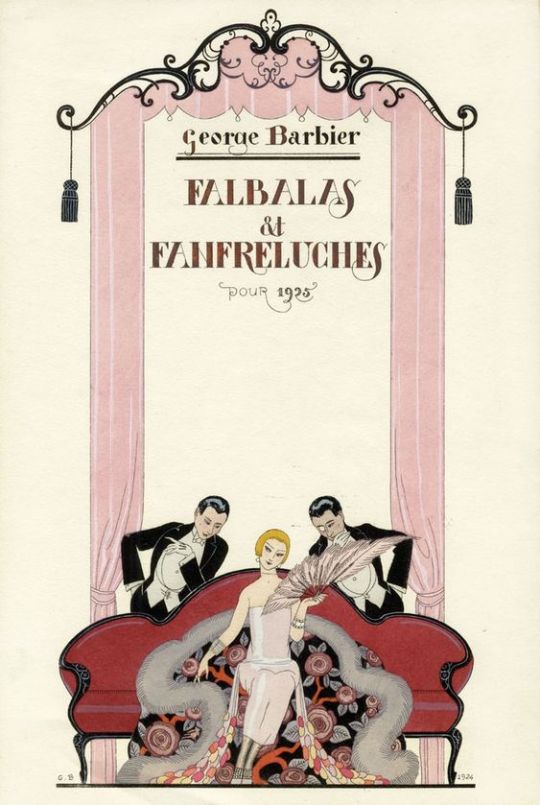
Is consumerism a visual symbol of modernity ? After all, the almost omnipresence of publicity in our visual world, which was definitely the case in the global world in the 1920s, is one of the ways in which that modernity, along with the dominion of capitalism that demands constant consumption from the people. As John Berger says in his foundational art history book Ways of Seeing published in 1972, which btw I totally recommend to get if you want to dive a bit deeper into art history theory, or you can just watch his 4 parts show of the same title which btw and i haven't said anything COULD potentially be on youtube but i haven't said anything at all. Anyway as he says quote : publicity images […| belong to the moment in the sense that they must be continually renewed and made up-to-date. Yet they never speak of the present. Often they refer to the past and always they speak of the future unquote. This was extremely relevant in the world of the interwar, where the construction in itself of the identity of the modern woman was made through those publicity images.
There is also something to be said about how the concept of modernity and of the modern girl truly blurs the lines of a social hierarchy., and that was a good thing, I do think those lines should be blurred to the point of non-existence. Now everyone could look like the popular starlets of the movies and buy their own makeup and clothes that could make them look as glamorous as the women on the silver screen, the easy availability of cosmetics, and of a climate of consumerism made it so that everyone could attain that status, the lines between the social boundaries and between the quote unquote elites and the working class are becoming more fluid than ever. Where the way you dressed immediately signaled your social rank and your place within the hierarchal structure, which, in turn, told other people how to treat you, this was no longer necessarily the case. However as those lines are shifting and moving, the way you could signal your status have also shifted.
The year was 1925 and Nell Brinkley, a young reporter and famous illustrator, was sending the first strips of The Adventures of Miss Prudence Prim out for publication to William Randolph Hearst’s Sunday American Weekly. Her stories of romance, love and carefree amusement were capturing the zeitgeist of this period that was the interwar: these years full of change and when modernity was at the forefront of culture. Born in the small town of Edgewater in Colorado in 1886, Nell Brinkley always had dreams of making art her career. At only 19 years old, after convincing her father that she could earn her life with a short contract as an illustrator at the Denver Post, she finally moved to the city where she would accomplish those dreams : New York. She came of age during the pinnacle of Edwardian sensibilities and was influenced by the ornate curves of Art Nouveau, but also by the new visual ideas of Art Deco. She created a style that was very unique for her time and was a woman who was constantly looking forward to the future. She was a perfect example of the New Woman of the 20th century. A woman that was bold, vibrant and who was not afraid to speak her mind. Her art was a vignette of a time that's now long gone by, and yet her art still feels as charming as it used to be. Those were delightful images of youthful fun and desire, ideas of romance, and, most surprisingly perhaps, issues of women’s rights and the working class.
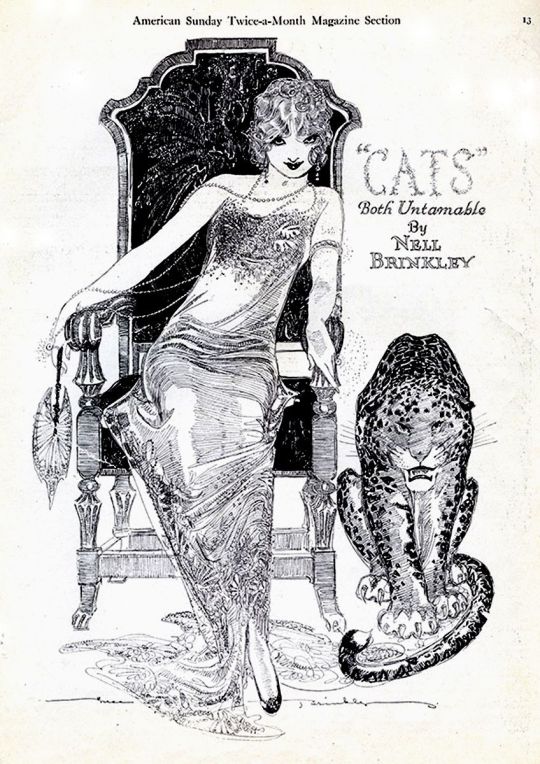
Brinkley got her start and her renown as an illustrator and journalist in 1907, while covering the gruesome and shocking case of Harry K. Thaw, a highly publicized trial involving the beautiful and popular showgirl Evelyn Nesbit. This case was sordid, involving a murder, a jealous husband, and a previous lover of Nesbit, and was a huge news story during that year. Brinkley’s interviews and various portraits of Nesbit put her in the limelight as a talented illustrator and reporter.
Commentator and columnist as well as an artist, the career of Nell Brinkley was prosperous and she was a constructing a new vision of womanhood. She was writing and drawing for women, and they were her direct audience. She wrote about cultural events, reviewed plays, gossiped about the latest fashions and movies. Her columns and her art were a guide to living fully and encouraging women to realize their full potential. Brinkley’s work had a definite feminist slant to it, in favor of working women and pushing for the rights of women. Her cartoons and illustrations had a decidedly political element to them that was part of the spirit of the times, about the endless possibilities that they carried within them. Without necessarily being an activist, she was always pushing for progress and women’s rights and trying to unshackle the constrictions of gender norms that were remnants of a previous generation. She was a writer as well as an illustrator, and this is how she communicated a vision of womanhood that was new and fresh, and she represented the way a lot of young women felt during these years. The New Woman, as she became known, was the face of a modern generation of women.
The archetypes of her illustrations were so strong that they were known as the "Brinkley Girls, » with their head full of short curls, their sleepy eyes and their darkened lips which brought a new vision of femininity. The Brinkley Girl was a break from traditional archetypes of beauty. She was no longer the demure and aloof women drawn by Charles D. Gibson that were in vogue. The Gibson Girl of the Edwardian era, with her long hair, her cold and distant beauty was now a thing of the past. The Brinkley Girls were far from being shy, and were not hesitant to take life as it came, and live fully and wholeheartedly. There was a certain desire of enjoying one’s life that was at the core of the illustrations of Brinkley. Emotion, passion and romance, as well as a sort of carefree independence were the new motto of a new generation of women who wanted to desperately have fun. It was an idealized idea of life and romance that provided a definite appeal to its audience.
The Brinkley Girl archetype was so widespread that it was used for advertising during the 1910s and the 1920s for diverse products that the modern woman would be using in her daily life. She was thus set as a symbol of the eminently modern woman. From hair curlers that « will not break your hair » to henna dye and face powder, the curly haired young women of Nell Brinkley were a good example of how illustration was used as part of advertisement in the early 20th century, blurring the lines between art and capitalism. The Brinkley Girl was known in the cultural sphere as being a symbol of a new generation of young women who were fearless, representing a vision of womanhood that was progressive and a celebration of independence as well as pleasure.
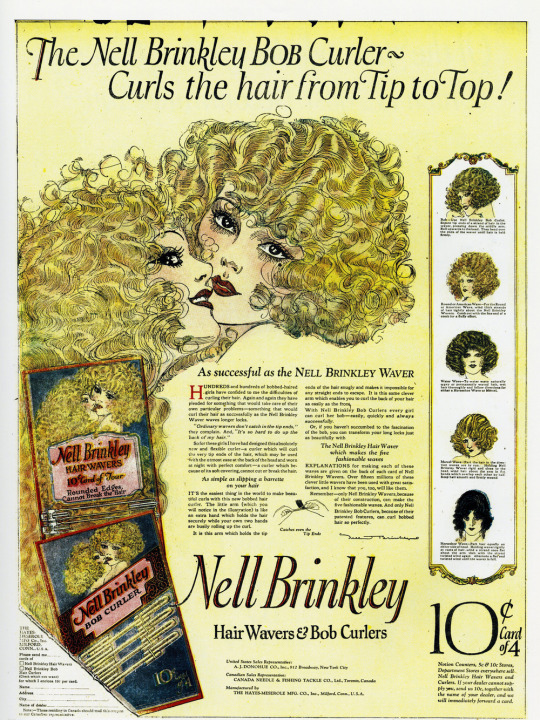
In the 1920s, her art involved sequential images and interesting stories, all starring young women as the main protagonists and centering their point of view. Starting with her serials in the 1910s and steadily creating comics during the rest of her career, she was an incredibly prolific author. From 1918 and onwards, most of her comics were full page and full color, a privilege reserved for very few artists during those years.
The Adventures of Prudence Prim, written by Carolyn Wells and illustrated by Brinkley, follows the life of a young lady who lives with her two sensible Edwardian aunts, and who has dreams of romance and adventures. Prudence takes the opportunity of her aunts taking a nap to go out and experiencing life for herself, after all « now if I just sit still and do exactly as I ought - I’ll never get a thrill ! » And so the adventures of Miss Pruddy Prim begin ! They are told each Sunday as she lives through new experiences and goes out and wears glamorous and fantastical ensembles. The pages are peppered with the different characters that Prudence Prim meets during her adventures, from society ladies with beautiful clothes and bobbed hair to dashing suitors who sweep her off her feet. Brinkley truly takes the time to dress all of her characters in fanciful outfits to match the universe she creates. The story is told by small, witty verses with a lot of good humor. Those narratives capture a certain desire for escape and the new daring sensibilities of young women, of their hunger for love and life. It is complete with the details of the latest fashion and decorated with illustrations of roses which will eventually influence the style of shoujo manga in the 1970s, with its abundance of roses, the drama, and extravagance of feelings.
The art of Brinkley creates a very indulgent feminine universe, where the men are dashing and noble, but still drawn in a very feminine way. It is in line with the slight gender fluidity of the time, where men were more delicate and women were cutting their hair short. Nonetheless, her worlds were utterly feminine and yet were trying to change what this world meant for the young woman of the interwar period — to leave the past behind and move toward the future and document the rapid changing social norms for women. Her style is especially striking in its transitional quality between art — the heavily ornamented and rounded lines of the Art Nouveau years in which she came of age and the streamlined and fashionable lines of Art Déco. It is a style that found a lot of admirers, but also a lot of detractors. She truly made her signature style one that captured the new woman of the era. She captured a very specific moment in time and the way women might have understood themselves. This understanding was not universal, however it captured the way American women wanted to visualize themselves. The way they wanted to represent and depict their future. It was an ideation that was becoming reality. In a way, Brinkley was creating the future through her art. Of course, she was not the only one. She was simply part of a moment in time, but I do have to say that Brinkley, with her frothy pictures and her fanciful curves was successful in a way a lot of artists were not.

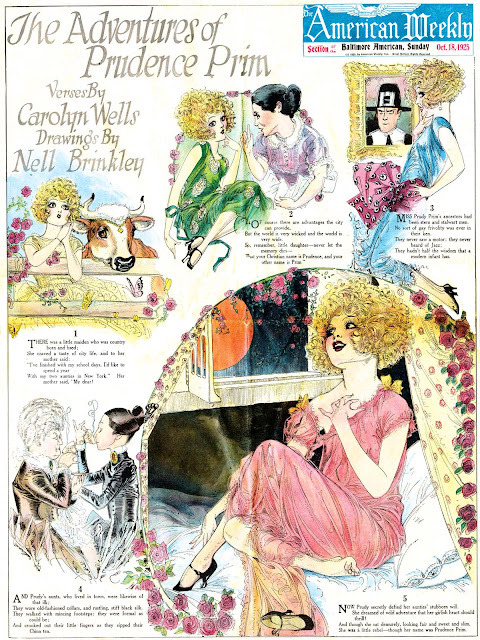
To me, she represents a very feminine idea, and to me, this type of art often receives criticism simply for daring to be feminine, maybe a bit shallow, maybe a bit superficial, but after all very cute and very fun. The rococo genre of the 18th century received similar criticisms in my opinion for being sugary and cute and overtly feminine. And this is simply always an unfair criticism to me, because judging something being aligned with femininity negatively comparatively to something more masculine is just plain old sexism. It’s not that the genre of rococo is devoid of criticism, there can be much to criticize, but people mostly bring up the fact that its frilly and pink and for some reason, that means it is not a sign of serious art. After all, this is what the neoclassical movement that followed was about. Something more visually sober, and more serious in its subject. And once again, the pendulum of taste swings.
Nell Brinkley was interesting as an artist that had this idea of the new woman being at the center of all the work she was doing. She was active during an era of profound change in the way women were perceived and perceived themselves, and whose art was something that was created solely for the modern woman. Brinkley was a daring and brave woman, with a taste for excitement and joy. She did not back down from any challenge; she flew a biplane in 1914, illustrated it, and commented on it for her audience's pleasure:« Nell Brinkley Tastes Joys of Real Freedom Soaring in Clouds ». She had adventures of her own and lived a full and brazen life. She got married to Bruce McRae II in 1920, and then she divorced him. I have to mention that he was several years younger than she was, so she was breaking boundaries in all sorts of ways,
She was a mother but also a career woman, and always followed her heart and ambitions no matter where they took her. Despite knowing a widespread cultural and financial success during her time, Nell Brinkley went the same road as many successful women artists often do, and was subsequently rapidly forgotten by history apart from the niche academics and amateurs of early 20th century comics. What she accomplished was no small feat. She managed to create this pictorial universe that understood the preoccupations of a modern woman, from her leisure to work to romance, from her activism to her frivolities, and how to balance all of it. She was a modern woman through and through.
This archetype of the modern girl is an intrinsic part of national identity and how those identities shaped the way she was understood and the way she was perceived by the general public, not only domestically but also internationally. She was also used for pushing political agendas either as to how the youth, and especially young women, were out of control, and trying to reassert the previous order of things, were women were not going out partying at all hours of days, and were expected to stay home. Or, on the flipside, using those young women living their lives as a political statement about how much more modern and civilized she was compared to the quote unquote retrograde societies and traditions. And this happened not only in the western world, but in Russia, India, China, Japan and elsewhere. From the illustrations and caricatures of Guo Jianying who satirized this new type of modern woman in China, with jokes and piques about the way things were changing, and changing fast, to the ads in various news papers across the world that promised their customers beauty and pleasure.
During the interwar, the illustrated advertisements for the brand Shiseido, a brand that started in 1872 and still is a sizable part of the beauty landscape today, and that revolutionized the market for the modern woman in Japan, were at the intersection of art, design and advertisement. These images were ones that were communicating an idea of modernity and newness, and yet advertised products that helped the consumer access this new ideal and be able to adhere to the beauty standards of the era, that were particular to Japan.

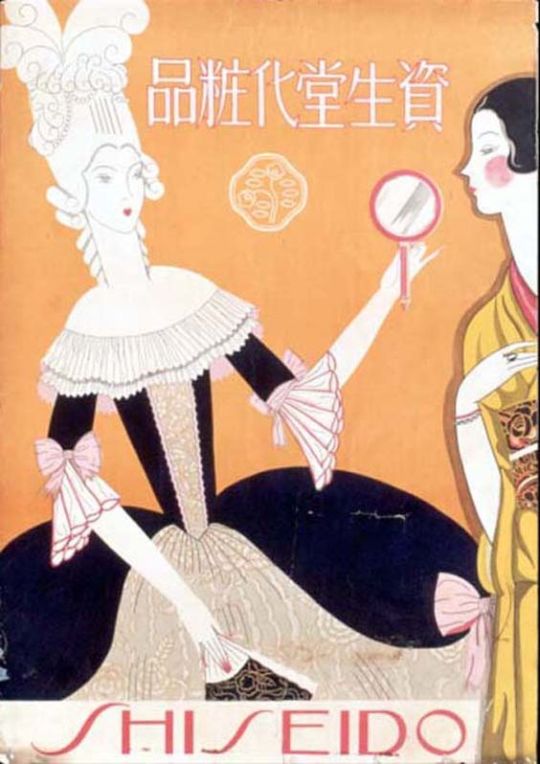
Shiseido’s graphic design communicated an idea of chic elegance that was becoming an aspirational quality during the interwar. The poster design by Sawa Reika in 1927 shows a young blonde woman wearing a fashionable evening dress holding a camelia flower, the brand’s logo, which was designed by Yabe Sue in 1924, all with the streamlined aesthetic conventions of art deco, and a limited palette of colors The result is minimalist and beautiful, and conveys so efficiently this new type of lifestyle and modernity that was being created, all through the use of graphic designs and cosmetics advertisements.
Even though the concept itself the of womanhood during the interwar was a mix of effervescence in the way it developed and grew and changed, and how, it stayed the same in a lot of ways. The illustrations of journals and magazine covers such the covers of the german graphic design journal « die reklame » in 1929 by Albert Rabenbauer were just another way the image of the modern woman got used in the art and the advertisements, not only helping to construct the idea of a modern woman, but the way that cosmopolitanism and the life in the urbane centers, full of the busy bustle of cities is just another way young women could enjoy a certain anonymity and freedom.
The idea of a chic and cosmopolitan world of material goods, of parties, of champagne and music, of a worldly but extremely fun woman at the center of it was one that was dominating the imagination. Ethel hays had small comic illustrations in the papers that satirized and caricatured that specific archetype of the flapper. Her character « Flapper Fanny » was the woman who was fashionable, a bit silly and yet, still very witty. Hays’ illustrations are extremely adorable, and manage to land a joke or a line with only a small drawing. The modern woman, the flapper, the gamine, this idea of the intrepid fashionable new woman was constructing itself in reality and also through the art, the illustrations and the visual representations of her in the advertisements and those, in turn, helped shape the way that the modern woman saw herself. Despite what she represented about this new era, being used to express concepts of modernity, a fear of change when women are going out and gaining those newfound freedom, being bolder and more in touch with their sexualities and their expanding idea of femininity, these women were still people and not only concepts about which people could discourse and debate, and I think this is something that is quite often forgotten.



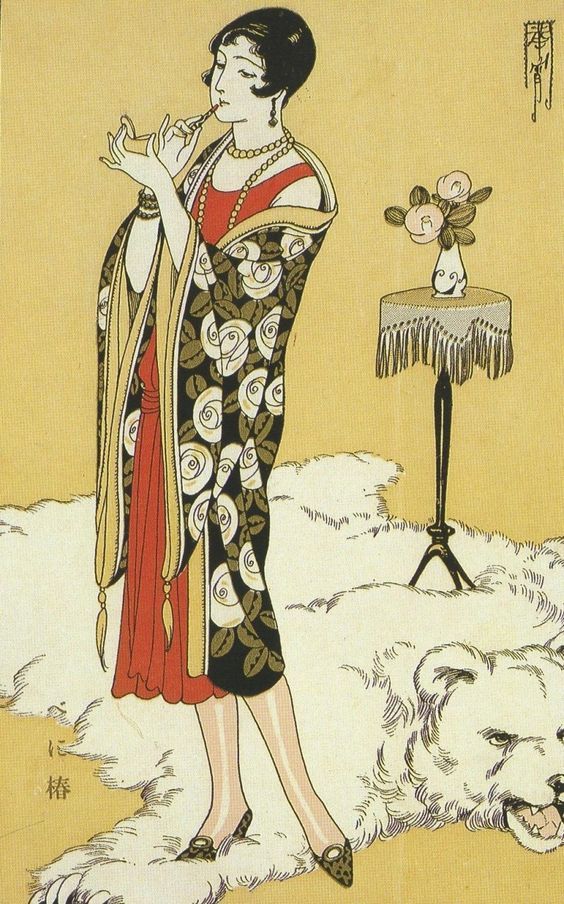

13 notes
·
View notes
Note
How is that picture from 1939 when bikinis were invented in 1946
I've always been a little surprised that that picture is from that early too, but what we'd today call high-waisted bikinis were totally acceptable by the end of the 30s. The late-40s style that the word was coined for was notable mostly for having way, way skimpier bottoms.
27 notes
·
View notes
Text
Gilles, by Pierre Drieu La Rochelle

Pierre Drieu La Rochelle was a french author of more than a dozen novels and numerous essays and poetry collections. A relentless critic of the French Third Republic, he drifted in every political and artistic current of his time, going from surrealism to socialism to fascism, he refused to ever be tied down to any single movement or ideology. As a surrealist, he traveled in the same circles as Louis Aragon, Gaston Bergery, and André Breton, but eventually fell out with the group over a love dispute. As a Socialist, he briefly flirted with pacifism and was involved with early-pan Europeanist movements, that would later go on to influence the founding of the European Union, however he found the Socialism of Paris entirely too Bourgeoisie, and drifted towards more reactionary ideas, eventually publishing a synthesis of his political thought titled Socialisme fasciste. As a collaborator during the German occupation of France, he petitioned for the release of Jean-Paul Sartre (among other intellectuals) from prison, and helped Jean Paulhan escape capture by the Nazis. For La Rochelle, the turbulent politics of his time were subsumed by an aesthetic disgust with bourgeoisie life, and this theme is present in all of his works. At the end of the war, hiding at the house of his friend André Malraux, he committed suicide by swallowing poison.
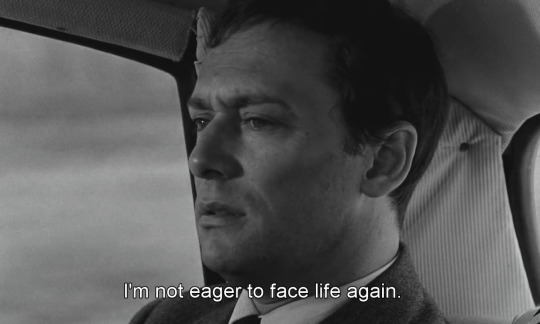
Best known in the English speaking world for his book Le Feu Follet, which was adopted into an acclaimed French nouvelle-vague film, Pierre Drieu La Rochelle considered the semi-autobiographical Gilles to be his greatest work. The acclaimed literary critic Gaëtan Picon wrote that Gilles “is, without any doubt, one of the greatest novels of the century—and one of those books in which the disarming sincerity of a man rises to the grandeur usually reserved to literary transpositions.”
The novel begins during the First World War, where the hero Gilles returns from the front after being badly wounded, his regiment having been decimated. Penniless, he asks his friends, the wealthy Falkenberg brothers, for help, only to discover that both of them had died. Their sister, Myriam, falls in love with him and helps him financially; although he does not respond to her love, Gilles accepts her support. He even decides to marry her when her father's death makes her a wealthy heiress. The day after the wedding, he leaves her, joins the army again and has a love affair with a nurse, whom he in turn leaves.After the war, Gilles frequented social circles and profited from his ex-wife's money. More or less unwillingly, he is drawn into a plot against the President of the Republic, Morel, after making friends with Morel's son-in-law, Gilbert de Clérences, and meeting Caël, the leader and almost guru of a dandy political group. The ridicule of intellectuals, the grotesquerie of events, the cowardice and demagoguery of politicians—compounded by the departure of Dora, an American girl he loved—leads him to leave France and seek refuge in Algeria. There he meets a simple, wholesome young girl, Pauline, with whom he experiences a true love affair for the first time. Gilles returns to Paris, however. Still disgusted with society and politics, he starts a newspaper and, after 6 February 1934, decided to join the only ideology capable of radically changing society and regenerating France: Fascism.
After the death of Pauline and the child she was expecting, Gilles chooses to be alone, and joins Franco's side in the Spanish Civil War.
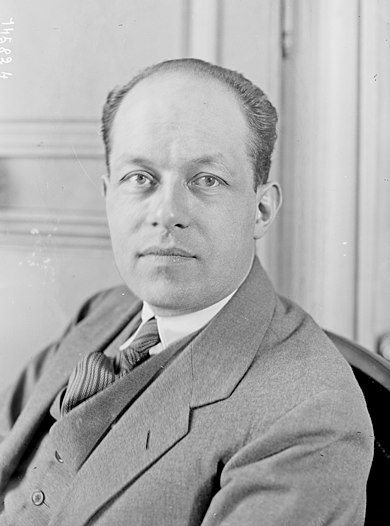
Despite his immense standing in the French inter-war literary scene, and his close relations with many of the most prominent writers and intellectuals of his time, Pierre Drieu La Rochelle has, because of his politics, been largely ignored by the Anglo literary establishment. His masterpiece, Gilles, has gone untranslated for the last seventy years… until now. Tikhanov Library has released the first three chapters of Gilles on substack, and is releasing the novel in serialized. We are adding new chapters every week, for free, to the public. You can read the first chapter here:
Tikhanov Library is an independent publishing company founded in Lund, British Columbia. To read Gilles and many other books, both reprints and new releases, visit our website at www.tikhanovlibrary.com | Our catalogue includes books by Alexis de Tocqueville, Dimitri Alioshin, and F.T. Marinetti, among other authors. We are constantly updating our catalog with new books and deals.
#Gilles#Pierre Drieu La Rochelle#French Literature#Translation#Dark Academia#nouvelle vague#le feu follet#Serialization#Literature#Novel#WW1#Interwar#Surrealism#Socialism
4 notes
·
View notes
Text

B-10 bomber over the Hudson
4 notes
·
View notes
Photo

Sixty Cent Thrills #bookstagram #paris #pulp #ambler #espionage #europe #interwar #heroin #whiteslavery #assassination #extortion #goodtimes https://www.instagram.com/p/CqDZ9OMtuhm/?igshid=NGJjMDIxMWI=
#bookstagram#paris#pulp#ambler#espionage#europe#interwar#heroin#whiteslavery#assassination#extortion#goodtimes
1 note
·
View note
Text
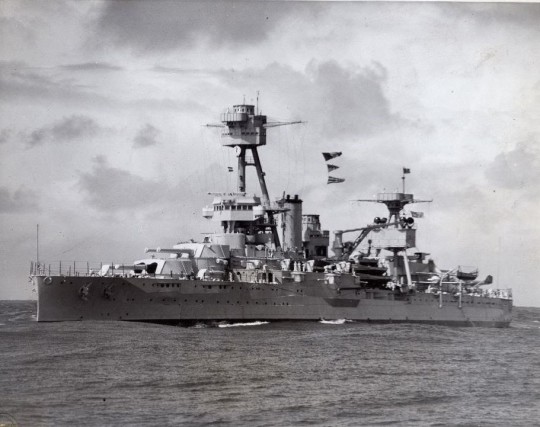
USS NEW YORK (BB-34) underway during Pacific maneuvers of the U.S. Fleet.
Date: July 11, 1935
AP Wired photo: 312226
#USS NEW YORK (BB-34)#USS NEW YORK#New York Class#Dreadnought#Battleship#Warship#Ship#United States Navy#U.S. Navy#US Navy#USN#Navy#Pacific Ocean#July#1935#interwar period#interwar#my post
26 notes
·
View notes
Photo



Recipe Advent Calendar - Day 2
Happy Holidays!
To celebrate the season, I am doing 12-days of seasonal recipes from the 14th to the 25th December. These are recipes published in the Brooklyn Daily Eagle newspaper during the period that Steve Rogers and Bucky Barnes lived in Brooklyn in the early 20th century.
Lemon Cream Cookies
1/2 cup butter
1 cup sugar
1/2 cup sour cream
2 eggs yolks, beaten slightly
2 cups find dry Bond crumbs
1/2 teaspoon soda
Grated rind of 1/2 lemon
Cream butter and sugar add sour cream and egg yolks and blend. Combine crumbs, soda and lemon rind and add to first mixture. Drop from teaspoon onto buttered baking sheet. Decorate the top of each with sugar and cinnamon mixed together, silver balls or tiny stars cur from candied cherries. Bake in a hot oven, 400 degrees F., until brown—about 10 minutes.
The recipe appeared in the Friday 11 December 1936 edition of the Brooklyn Daily Eagle.
Advent Calendar
Day 1 | Day 2 | Day 3 | Day 4 | Day 5 | Day 6 | Day 7 | Day 8 | Day 9 | Day 10 | Day 11 | Day 12

[ Support SRNY through Patreon and Ko-Fi ]
And join us on Discord for fun conversation!
I also have an Etsy with up-cycled nerdy crafts
#Steve Rogers#Bucky Barnes#recipes#Christmas Recipes#holiday#advent#vintage food#Vintage Recipes#1930s#Great Depression#depression era#depression era food#early 20th century#20th Century#interwar#captain america#Captain America: The First Avenger#ca:tfa#CAPTAIN AMERICA REFERENCE#fanfic writing#Fanfic references#fanfic research#writing resources#writing reference#fan fic writing#historic new york#historically accurate#historically accurate steve rogers#historically accurate bucky barnes
63 notes
·
View notes
Text
The Forgotten History of the World’s First Transgender Clinic
I finished the first round of edits on my nonfiction history of trans rights today. It will publish with Norton in 2025, but I decided, because I feel so much of my community is here, to provide a bit of the introduction.
[begin sample]
The Institute for Sexual Sciences had offered safe haven to homosexuals and those we today consider transgender for nearly two decades. It had been built on scientific and humanitarian principles established at the end of the 19th century and which blossomed into the sexology of the early 20th. Founded by Magnus Hirschfeld, a Jewish homosexual, the Institute supported tolerance, feminism, diversity, and science. As a result, it became a chief target for Nazi destruction: “It is our pride,” they declared, to strike a blow against the Institute. As for Magnus Hirschfeld, Hitler would label him the “most dangerous Jew in Germany.”6 It was his face Hitler put on his antisemitic propaganda; his likeness that became a target; his bust committed to the flames on the Opernplatz. You have seen the images. You have watched the towering inferno that roared into the night. The burning of Hirschfeld’s library has been immortalized on film reels and in photographs, representative of the Nazi imperative, symbolic of all they would destroy. Yet few remember what they were burning—or why.
Magnus Hirschfeld had built his Institute on powerful ideas, yet in their infancy: that sex and gender characteristics existed upon a vast spectrum, that people could be born this way, and that, as with any other
diversity of nature, these identities should be accepted. He would call them Intermediaries.
Intermediaries carried no stigma and no shame; these sexual and Gender nonconformists had a right to live, a right to thrive. They also had a right to joy. Science would lead the way, but this history unfolds as an interwar thriller—patients and physicians risking their lives to be seen and heard even as Hitler began his rise to power. Many weren’t famous; their lives haven’t been celebrated in fiction or film. Born into a late-nineteenth-century world steeped in the “deep anxieties of men about the shifting work, social roles, and power of men over women,” they came into her own just as sexual science entered the crosshairs of prejudice and hate. The Institute’s own community faced abuse, blackmail, and political machinations; they responded with secret publishing campaigns, leaflet drops, pro-homosexual propaganda, and alignments with rebel factions of Berlin’s literati. They also developed groundbreaking gender affirmation surgeries and the first hormone cocktail for supportive gender therapy.
Nothing like the Institute for Sexual Sciences had ever existed before it opened its doors—and despite a hundred years of progress, there has been nothing like it since. Retrieving this tale has been an exercise in pursuing history at its edges and fringes, in ephemera and letters, in medal texts, in translations. Understanding why it became such a target for hatred tells us everything about our present moment, about a world that has not made peace with difference, that still refuses the light of scientific evidence most especially as it concerns sexual and reproductive rights.
[end sample]
I wanted to add a note here: so many people have come together to make this possible. Like Ralf Dose of the Magnus-Hirschfeld-Gesellschaft (Magnus Hirschfeld Archive), Berlin, and Erin Reed, American journalist and transgender rights activist—Katie Sutton, Heike Bauer. I am also deeply indebted to historian, filmmaker and formative theorist Susan Stryker for
her feedback, scholarship, and encouragement all along the way. And Laura Helmuth, editor of Scientific American, whose enthusiasm for a short article helped bring the book into being. So many LGBTQ+ historians, archivists, librarians, and activists made the work possible, that its publication testifies to the power of the queer community and its dedication to preserving and celebrating history. But I ALSO want to mention you, folks here on tumblr who have watched and encouraged and supported over the 18 months it took to write it (among other books and projects). @neil-gaiman has been especially wonderful, and @always-coffee too: thank you.
The support of this community has been important as I’ve faced backlash in other quarters. Thank you, all.
NOTE: they are attempting to rebuild the lost library, and you can help: https://magnus-hirschfeld.de/archivzentrum/archive-center/
#support trans rights#trans history#trans#transgender#trans woman#trans rights#trans representation#interwar period#weimar#equality#autistic author#nonbinary#lgbtq representation#lgbtqia#book news#book#books#new books#thank you#neil gaiman#for your support
2K notes
·
View notes
Text
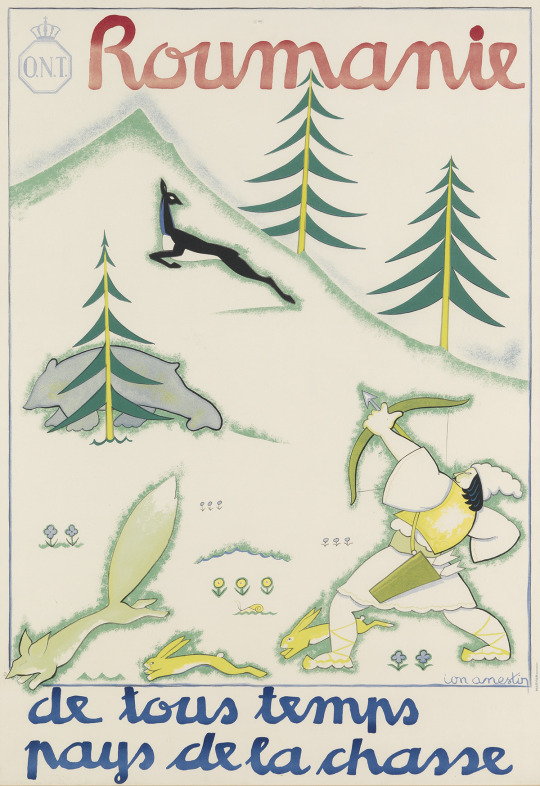
Romania: Hunting Country
Artist: Ion Valentin Anestin
#roumanie#ONI#interwar#1920s#1930s#art deco#tourism poster#vintage poster#vintage advertising#romania#kingdom of Romania#Ion Valentin Anestin
18 notes
·
View notes
Text
The grand game
When the individual becomes aware that the "zoon" in zoon-politikon is a fundamental part which was disregarded and now underdeveloped, the individual tends to rage at the dying of the light for he no longer matters to the specie.
Regardless of how loud he riots, he will be forsaken; the game is lost, dignity is proved fiction and the survivors flap their right-wings into the progressive interwar period.
Using kindness against man is the highest treason. It is the forbidden trick which was used to build up the evolutionary stage. This is the grand game: the survival of the fittest and the tantrum of weaklings.
#game#zoon#zoon-politikon#manhood#progressivism#survival of the fittest#tantrum#kindness#interwar#riot#despair#forsaken#weak#powerless
1 note
·
View note
Photo

A barricade manned by militia after the nationalist uprising in Spain on 19th July 1936 at the start of the Spanish Civil War. The Spanish Civil War was a conflict fought between 1936 and 1939 in Spain. The war began after a military uprising against the democratically-elected government of the Second Spanish Republic. The Nationalists, led by General Francisco Franco, were supported by fascist Italy and Nazi Germany, while the Republicans were supported by the Soviet Union and international volunteers. The war was marked by intense fighting, including the bombing of the city of Guernica, and resulted in the victory of the Nationalists, who established a dictatorship under Franco that lasted until his death in 1975. The war had a profound impact on Spain and Europe, and is considered a prelude to World War II. #interwar #civilwar #interbellum #europe #europeanhistory #antifascism #republican #nationalist #war #history #militaryhistory #military #colourised #colorized #colourisedhistory #colorizedhistory #color #colour #colorizedhistoricalphotos #colorization #colourisation #retro #goodolddays #classic #goldenoldies #colorizedphoto #colourisedphoto #spanishcivilwar #spain #spainhistory https://www.instagram.com/p/CpTj0zmKJPh/?igshid=NGJjMDIxMWI=
#interwar#civilwar#interbellum#europe#europeanhistory#antifascism#republican#nationalist#war#history#militaryhistory#military#colourised#colorized#colourisedhistory#colorizedhistory#color#colour#colorizedhistoricalphotos#colorization#colourisation#retro#goodolddays#classic#goldenoldies#colorizedphoto#colourisedphoto#spanishcivilwar#spain#spainhistory
1 note
·
View note
Photo

If I'm truly bias against any pod genre it's actual play podcasts. I'm only in D&D for the story. Just ask anyone I've ever gamed with. But there are a few shows actually I've really enjoyed, so... Let's talk about The Infinite Bad also from @definitelyhumanproductions . The Infinite Bad is an comedy, horror, Actual Play podcast that brings together aspects of 5e D&D, D20 modern, and Call of Cthulhu. The story is set during the Inter-war period, and begins in Britain--where 4 strangers meet on the way to visit relatives staying at a country manor turned hospital. But when people turn up dead and/or mysteriously disappeared, and strange occurances happen overnight, will our 4 unlikely companions make it out alive and with their sanity intact?? Will they follow the trail of teeth (and creepy hands) across the world to uncover and defeat the mystery? There only one way to find out! That's 65, 30ish minute episodes all wrapped up and complete. What I love about this series is that despite being actual play, it's a very will crafted story, the players remain consistent in their characters and the DM gives good flavor to the story based off their rolls. Also, no one is too pedantic about the rules or pushing what they think they should be. It's peak D&D as a story vehicle, just the way I like it. Also, special shout-out to Maximillian John (also of Mars Corp) whose older, aristocratic, British lady of the post-Victorian period, Cornelia Cavendish, is a constant source of joy. Pure gold. So, if you love a good dice guided story without some massive game mechanic lead in, all things Definitely Human, and some solid gothic horror comedy, then The Infinite Bad is for you! #actualplay #actualplaypodcast #actualplaydnd #theinfinitebad #definitelyhuman #comedypodcast #horrorpodcast #interwar #maximillianjohn #Fictionpodcasts #podcastsunday #trypod #podcasts #podcast #podcastrecommendation #podcastrecommendations #recommended #podcastsunday #audiodramasunday https://www.instagram.com/p/CorH6u5OMWH/?igshid=NGJjMDIxMWI=
#actualplay#actualplaypodcast#actualplaydnd#theinfinitebad#definitelyhuman#comedypodcast#horrorpodcast#interwar#maximillianjohn#fictionpodcasts#podcastsunday#trypod#podcasts#podcast#podcastrecommendation#podcastrecommendations#recommended#audiodramasunday
1 note
·
View note
